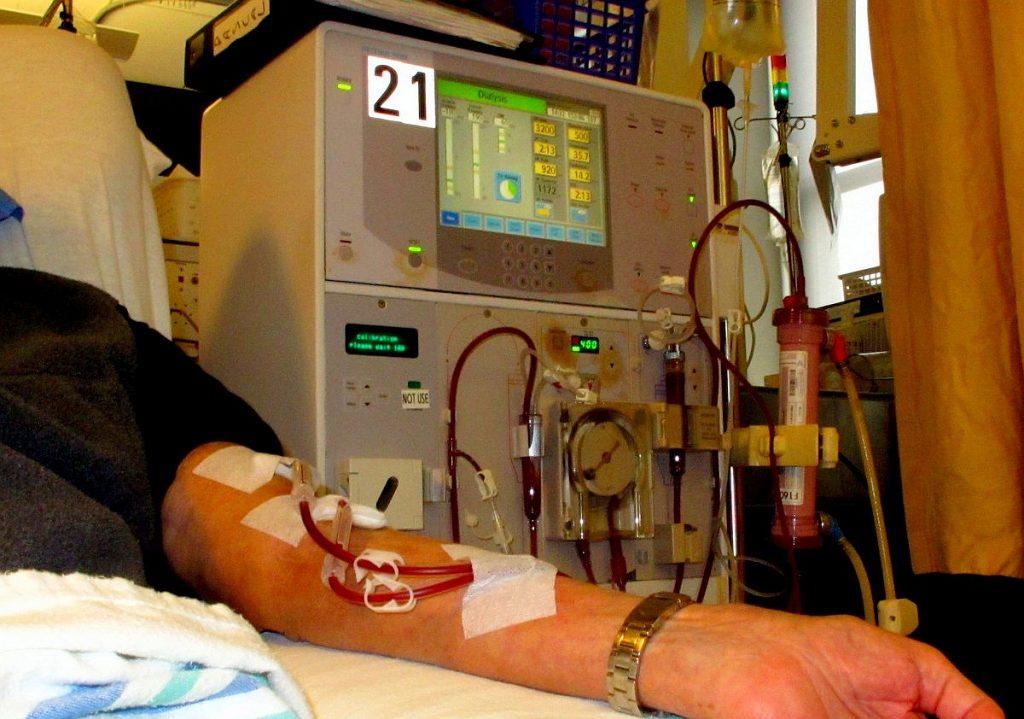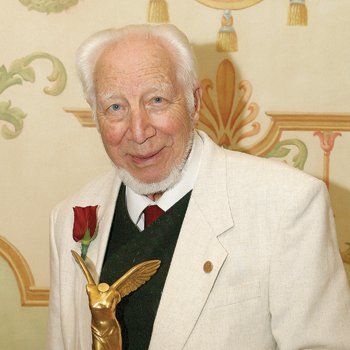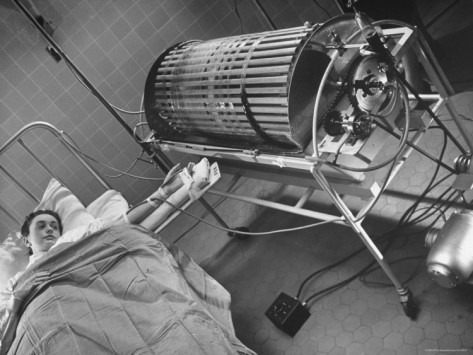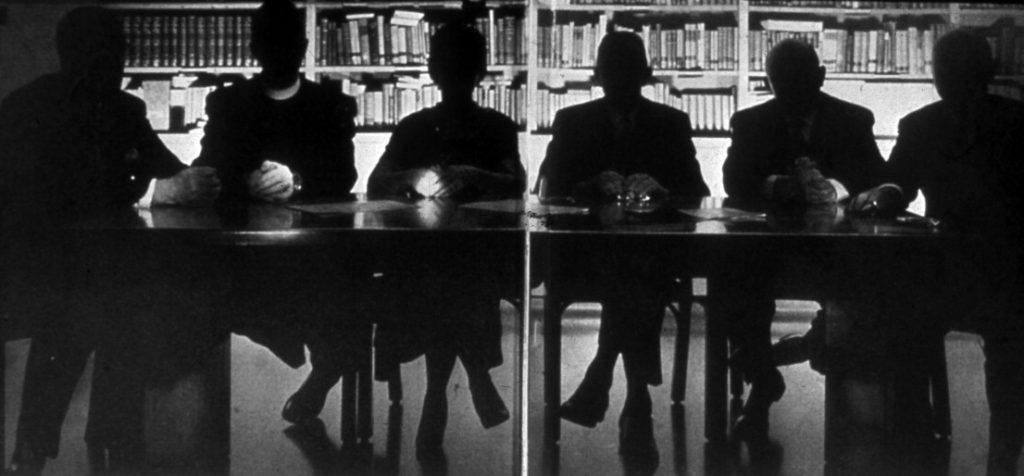by Godfrey Onime

“Dr. Onime, your patient in room 607 is throwing a fit,” read the nurse’s message on my iPhone. “He wants to leave. What should I do?”
I was half-way through lunch. I placed a call to the nurse and asked her to try and convince the patient to stay until I got there. “I have called security,” she said, “but we can’t continue to hold him if he doesn’t want to wait.” Gobbling down the rest of my meal, I clutched my drink and dashed to the elevator.
I’ll call the patient Mr. Freeman. He had irreversible kidney failure, or End Stage Renal Disease (ESRD). He often missed outpatient dialysis. He would end up in the emergency room huffing and puffing from volume-overload, his lungs bathed in fluids, and his potassium level dangerously elevated.
This time, Mr. Freeman had also suffered a heart attack and had been admitted to the ICU. He had received urgent hemodialysis, the on-call kidney specialist physician, or nephrologist, and nurse dashing to the hospital in the middle of the night for the task. Mr. Freeman had only been transferred out of the ICU to a monitored bed earlier today, the plan being for him to be observed for one more day and to receive another dialysis session tomorrow.
When I arrived at the medical ward, Mr. Freeman had changed into his street clothing and was parading about his room. A hospital security officer was already at his door. Mr. Freeman was tall and thin, and stooped a bit to the side. Aged fifty-four, he looked more like seventy.
“I already had my dialysis and I’m fine,” he protested in the raspy voice of a chronic smoker. “You only want me to stay because I got insurance. You can’t keep me. I know my rights.”
Mr. Freeman’s condition, ESRD, is among America’s fast-rising ailments. Although the reason for the spike remains the epidemics of diabetes and high blood pressure, a litany of other causes exists for irreversible kidney failure: lupus, rheumatoid arthritis, infections including hepatitis, HIV and COVID-19, genetic predisposition, trauma, various medications, and other yet unidentified insults. Without functioning kidneys, our bodies can no longer eliminate dangerous toxins and wastes, and we die in a matter of days or weeks. In fact, that was the plight of those with ESRD for much of history–until 1945.
1945– and the Dutch physician Willem Kolff, who invented the artificial kidney–or dialysis machine.

The road to Kolff’s artificial kidney dates back to the late 1930s, when fresh out of training and working at a hospital in the Netherlands, he helplessly watched as a young man of 22, barely his own age, slowly die from kidney failure. Determined there must be a machine that could do the work of those little bean-shaped kidneys, he plunged into research. But just about then, World War II erupted and the Nazis seizing the Netherlands, Kolff was relocated to a remote Dutch hospital. There, finding materials scarce for his research, he was far from dissuaded. Improvising, he used orange juice cans, a wooden drum, a tubing made from sausage skins, a washing machine, and whatever other items would do. By 1943, though crude, Kolff’s invention was born. Two years later and after trials of treatment on 16 patients with kidney failures and refining his invention along the way, success came. In 1945, he treated a 67-year-old woman in a coma from acute kidney failure (called uremic coma) and she regained consciousness after 11 hours of dialysis. She would live for seven more years before dying, not from kidney failure, but another ailment.

Kolff would soon immigrate to the United States where he would continue his research and perfect his machine. A great humanitarian, Dr. Kolff did not patent the machine, but sent copies of the design all over the world.
Today, dialysis treatment is available to the vast majority of Americans who want it — though many too often take that privilege for granted. But dialysis was not always readily available to all. In America, for instance, there was one important hitch to the life-saving machine: it was expensive and hence only available to a wealthy few. The only way to reverse this, it seemed, was through governmental support.
That was the direction to which pressure began to build by the 1960s and early 70s. Some prominent physicians and patient advocates clamored for Federal support. In one demonstration, Shep Glazer, 43, father of two, and vice president of the National Association of Patients on Hemodialysis, made an emotional appeal to two congressional committees while attached to a dialysis machine. “If your kidneys failed tomorrow, wouldn’t you want the opportunity to live?” he asked. “Wouldn’t you want to see your children grow up?” In 1972, Congress passed the Medicare ESRD bill, and President Nixon signed it into law. The legislature extended Medicare benefits to include people younger than 65 years who had ESRD.
“Most of us were very surprised,” John N. Forest, MD, told me. He was a newly minted kidney specialist at the time of the legislature and now a professor of medicine at Yale University. “The Nixon administration was cutting other programs,” Forest added.
The program began with eleven thousand patients. Experts estimated that it would expand to about thirty-five thousand people in ten years, at a cost of one billion dollars. They also projected that dialysis would enable many patients to return to work, pay taxes, and contribute to the program.
The experts were pathetic forecasters. In just four years, those projections had already been exceeded. Today, there are nearly 750,000 Americans with ESRD, costing tax payers more than $35 billion dollars a year for dialysis, medications, and hospitalizations — more than seven percent of Medicare budget and nearly the yearly amount of spending on K-12 education. The United States Renal Data System estimates that we spends about $88,000 thousand per patient a year for dialysis and related costs.
The potential profit have galvanized innovators and entrepreneurs in this field. Today, there are better dialysis machines. There are also more and more medications to correct dangerous electrolytes levels, bone loss, and anemia — conditions that trouble most persons with ESRD. But here’s the puzzle: the increased care and huge cost have not affected life expectancy for people with ESRD. Consider the 67-year-old woman who, in 1945, became the first patient to be successfully treated with dialysis–the woman who survived and lived for another seven years. How has the prognosis improved for dialysis patients in the intervening years? It hasn’t. Seventy-five years later, these patients can expect to live for about seven to eight years more, less if they are sixty or older.
Researchers and experts cite several reasons for this. One is the Medicare ESRD program itself. Medicare covers three dialysis sessions a week but had not traditionally imposed requirements for the quality of those sessions. Such lack of standards has spawned many profit-driven, badly run, and understaffed dialysis centers, as well as high-revenue mega-corporations. Yet other experts contend that, unlike some European countries that boast better survival rates for dialysis patients, America does not exclude anyone from dialysis. “Everyone is dialyzed because the government pays for it,” said Dr. Forest.
There’s another contributing factor, which has less to do with the healthcare system and more to do with patients themselves: poor compliance. Patients like Mr. Freeman.
“Many of our patients skip dialysis sessions,” said Ezra Lee McConnell, MD, a nephrologist with Carolina Kidney Care, in Lumberton, North Carolina. A thin man with short cropped, graying hair, he has a penchant for thoroughness, often teasing out all the issues when he consulted on my patients. Also, Dr. McConnell said, many patients drink more fluid than they should between dialysis sessions. He elaborated: “The reason is that they don’t comply with their salt restrictions. They get thirsty and they drink.” Still many have poorly controlled diabetes; they too get thirsty and drink more than they should. These poorly adherent patients run into trouble between dialysis sessions. They have heart attacks, heart failures, and dangerous irregular heart rhythms. They end up in hospitals, ramping up costs. Often, they die.
Standard dialysis involves three sessions per week, with each session lasting four hours. Some studies have shown that longer and more frequent sessions — six days a week — improve mortality. One was published by Glenn M. Chertow, M.D., M.P.H, in the New England Journal of Medicine, in December of 2010.
Dr. McConnell agreed that more frequent session would be ideal, but was not sure this was practical. “You won’t believe how many people want their dialysis shortened or miss dialysis altogether. You think they will go for six days a week? Good luck on that.”
Sanjay Mittal, MD, a colleague of Dr. McConnell, contended that there are many people who are adherent to diet and treatments, and a small percentage remains gainfully employed. “At NYU,” he said of the hospital where he trained, “You see these successful people all the time working on their laptops while being dialyzed.” Still, he admitted, the non-adherence and readmission rates for many dialysis patients can be depressing.
In 1962, ten years before the passage of the Medicare ESRD legislation allowing universal access to dialysis, Seattle’s King County Medical Society opened the world’s first dialysis clinic at Swedish Hospital. A nonprofit institution, the clinic also had to contend with the two ugly problems of cost and scarcity of the machines, given the increasing number of people clamoring for life-saving treatment. Committees were established to decide who should receive dialysis and who should not. Some of the criteria the panels employed were: patients had to commit to 45 hours of dialysis a week and must remain employed; they had to adhere to a prescribed, strict diet; and their “social worth” was taken into account. By their first deliberations, the committees saw 17 patients; 10 were selected for dialysis, and the remaining seven died.

The Seattle committees were largely criticized as “death panels,” but as other clinics opened up, they also had to contend with the problems of money and scarcity. Panels across the country decided who received access to the life-saving treatment. The Medicare ESRD legislature ended the need for these committees.
Today, dialysis is more widely available, but it is even more expensive. Dialysis patients have grown to become the largest single-group users of Medicare funds. There are also patients who see it as a right, who believe they can eat what they want, receive dialysis when they want, and for how many hours each session. Once, I asked a man of thirty-four why he never went for his dialysis treatments, but ended up at the hospital every couple of weeks. His reply: He was too busy, and three times a week was too much for dialysis. He felt just fine with one or two dialysis sessions a month, he said. Another woman, eighty-two, once stated that she did not care for dialysis, but was doing it for her family. Treatments always left her “wiped-out,” so she missed as many sessions as she could, before her children called the ambulance and she was hauled to the hospital. The woman died six months after starting dialysis.
Many experts agree that the current cost and mal-distribution of the American healthcare dollars are alarming. Also, other health crises such as the COVID-19 pandemic have revived contemplation of how to allocate scarce healthcare resources. As I contemplated the case of Mr. Freeman and my other sometimes reluctant ESRD patients, I could not help wondering: Could it be that perhaps America once more needs committees of ethicists who decide who should receive dialysis and when to withhold the procedure? Could Congress be bold enough to pass such an admittedly controversial follow up mandate to the Medicare ESRD legislature? Only time would tell.
In the meantime, I asked Dr. Mittal what he thinks should be done when patients do not adhere to their diets or treatment regimens.
“What can we do?” Mittal asked rhetorically. “We do the best we can to take good care of our patients.”
I, too, tried to do the best I could for my patient. Easing past the officer at his door, I took a seat and encouraged Mr. Freeman to sit, too. I asked how I could help. At first he kept insisting on leaving, but then complained about the food — too small portions and little or no salt. Also, the nurses refused to let him out to smoke. No, the nicotine patch I ordered did not work for him. As a compromise, I agreed to let him go out to smoke three times a day.
“What about the salt?” he asked hopefully.
“No extra salt,” I replied firmly.
